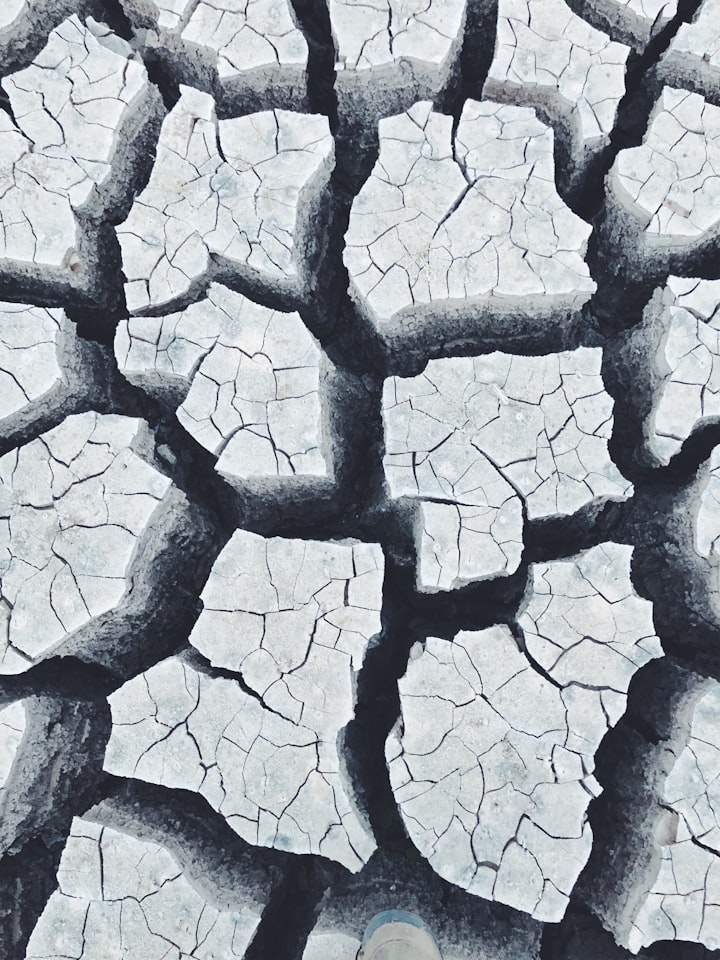
A recent major study conducted by the Potsdam Institute for Climate Impact Research in Germany shows that human activities have so far led to a global temperature rise of 1.1 degrees Celsius, resulting in a climate crisis that has brought the world to the brink of five "catastrophic" tipping points, including the melting of Greenland's ice cap.
(The climate crisis caused by the 1.1 degree Celsius increase in global temperatures caused by human activities so far has brought the world to the brink of five "catastrophic" tipping points, namely the melting of the Greenland ice cap, the collapse of a key ocean current in the North Atlantic, the sudden melting of carbon-rich permafrost, the collapse of convection currents in the Labrador Sea and the massive death of tropical coral reefs. The large-scale death of tropical coral reefs. The figure shows a map of global tipping points. (Image credit: Potsdam Institute for Climate Impact Research)
The researchers note that triggering tipping points would have a huge impact on the world and that to maintain livable conditions on Earth and keep societies stable, people must do everything they can to prevent tipping points from being crossed. By reducing greenhouse gas emissions immediately and quickly, humans can reduce the likelihood of crossing tipping points.
Five dangerous tipping points
In an article in the journal Science, the Potsdam Institute for Climate Impact Research says they evaluated more than 200 studies since 2008 on past tipping points, climate observations, and modeling and found evidence for a total of 16 tipping points, including nine global tipping points: Greenland ice sheet melt, West Antarctic ice sheet collapse, an East Antarctic ice sheet collapse, another East Antarctic ice sheet collapse, partial collapse of the Atlantic Dimensional Overturning Circulation (AMOK), total collapse of the AMOK, loss of the Amazon rain forest, melting of the permafrost, and loss of Arctic sea ice in winter.
The study shows that the world is on the verge of five dangerous tipping points: the melting of the Greenland ice cap, the collapse of a key North Atlantic current, the sudden melting of carbon-rich permafrost, the collapse of the Labrador Sea convection, and the mass die-off of tropical coral reefs.
The study reports that four of the five tipping points would change from "likely to be reached" to "very likely to be reached" under a 1.5 degree Celsius temperature increase (the minimum warming currently projected), and another five would change to The other five tipping points become "likely to be reached," including the change of large areas of arboreal forest and the disappearance of almost all alpine glaciers. Reaching a tipping point means crossing a temperature threshold that causes changes in the climate system that cannot be stopped even if global warming ends.
"We can see signs of instability already in parts of the West Antarctic and Greenland ice sheets, the permafrost zone, the Amazon rain forest, and potentially the Atlantic overturning circulation," said study lead author Dr. David Armstrong-McKay of the University of Teeter in the United Kingdom.

In a Sept. 8 report, the British newspaper The Guardian website noted that, according to scientists, global warming would need to reach at least 2 degrees Celsius to trigger the remaining six tipping points. These tipping points will have an impact over a period ranging from a few years to several hundred years.
The researchers thus conclude that "at global warming of more than 1 degree Celsius, the Earth has left a 'safe' climate state."
Professor Nickolas Bells of the Technical University of Munich, Germany, said, "This report provides a timely update on potential tipping points on the planet. The threat of triggering tipping points in the event of further temperature increases is real."
A recent report released by the United Nations Intergovernmental Panel on Climate Change says that the risk of triggering a climate tipping point becomes significant under global warming of 2 degrees Celsius.
Important implications of reaching the tipping point
Reaching the tipping point would have important implications for the world, such as a melting Greenland ice cap that would eventually lead to a significant rise in sea levels and a collapse of key ocean currents in the North Atlantic that would disrupt the rainfall on which billions of people depend for food.
Recent studies have shown signs of instability in the Amazon rainforest. The loss of the Amazon rainforest will have profound effects on global climate and biodiversity, as well as on the Greenland ice sheet and AMOK. And, in assessing the Amazon rainforest-related tipping points, the researchers did not take into account the effects of deforestation. McKay said, "The combined effects of warming and deforestation could greatly accelerate this process."
Seven other tipping points would have serious regional impacts, two of which are: the demise of tropical coral reefs and a change in the West African monsoon. Other potential tipping points that scientists are still studying include the loss of oxygen from the oceans and a major change in the Indian summer monsoon.
The researchers note that even if the temperature stops rising, it will continue to change to a new state once the ice caps, oceans, or rainforests exceed the tipping point. The time needed for the transition depends on the system and can range from decades to thousands of years. For example, ecosystems and atmospheric circulation patterns change rapidly, while ice cap collapse is slower, but inevitably leads to a sea level rise of several meters.
Richard Winemaker, one of the authors and a researcher at the Potsdam Institute for Climate Impact Research, said that crossing one tipping point is usually likely to trigger other tipping points, which in turn have a cascading effect. But such effects are still being studied and therefore are not included in this study. This means that this report shows what is probably the lowest risk.
Trying to prevent tipping points from being crossed
Professor John Stockroom, a member of the research team and director of the Potsdam Institute for Climate Impact Research, said, "The world is heading toward a future of 2 to 3 degrees Celsius of global warming."
He added, "This makes it likely that the planet will cross multiple dangerous tipping points in the future that would be catastrophic for people around the world. To maintain livable conditions on Earth and keep societies stable, we must do everything we can to prevent tipping points from being crossed."
McKay said, "This study confirms why the Paris Agreement's 1.5 degree Celsius target is so important and that people must work for it. By reducing greenhouse gas emissions immediately and quickly, humanity can reduce the likelihood of crossing the tipping point."
He further noted that more research is needed to narrow the range of critical temperature thresholds and that current valuations are still inaccurate.
Professor Thomas Stocked of the University of Bern in Switzerland noted, "We are far from finished with scientific research involving critical points; it is just beginning. To answer the question of what kind of warming is critical to which tipping point, we need better models."
About the Creator
Monu Ella
And I know it's long gone and there was nothing else I could do






Comments
There are no comments for this story
Be the first to respond and start the conversation.